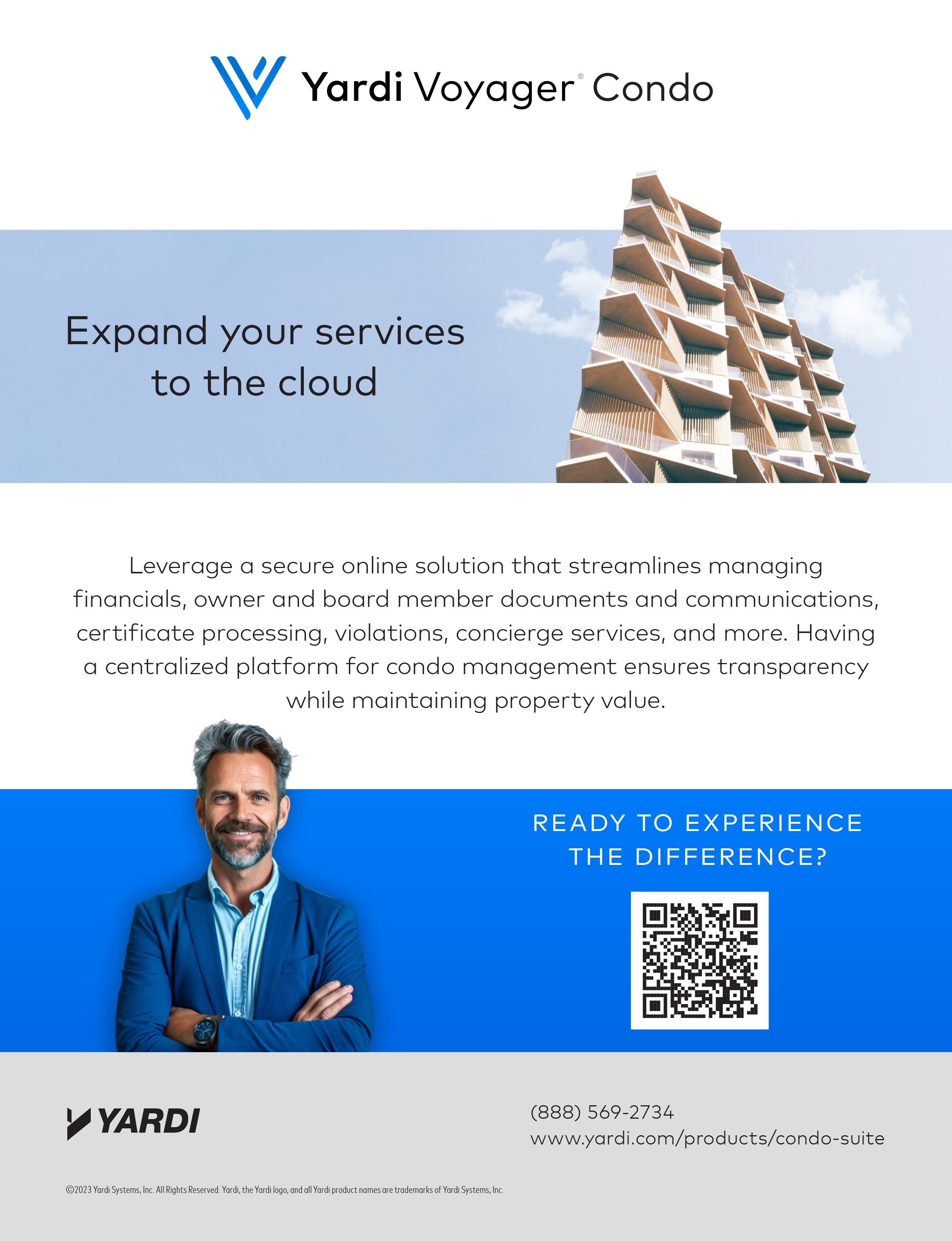 April 2022
April 2022
Managing a condominium community is complex. Resident service requests, receiving condo fees and other payments, and dealing with vendors are central responsibilities. Communicating with residents, providing mandated and other information, and booking amenities are daily activities. Quality condo management software helps do all this and more in less time through a computer, laptop, tablet or mobile phone.

“Condo management software is a comprehensive tool designed to streamline condominium management operations,” explains Nicholas Gill of BuildingLink Canada. “The main product is designed to automate administrative tasks, simplify submission and resolution of maintenance requests, manage amenities and improve communications. Buildings with front desks are equipped with tools to track keys, receive parcels and more. Dedicated apps for both management and residents make all this super simple and convenient. Powerful search capabilities, analytics and reporting are standard.”
Additional features may include a website, financial management tools, smart-home or parcel management integration, online payments, key management, package handling, and even leak detection sensors.
Mark Bush of UpperBee Software elaborates on the importance of this technology. “Condo management software has the potential to improve or impair your community operations and is available at different price points. More expensive products are typically better and offer more. Free products, while potentially appealing and claiming to offer the same benefits, have drawbacks.”
The cost of free
 You get what you pay for. Free products offer limited tools and have limited functionality. They may have been developed to encourage a subsequent and costlier purchase to obtain desirable features. To be truly useful, free software typically requires purchases as needs grow. They may “discourage” conversion to another, possibly superior, product by making it difficult to transfer data or information from the system. Free products are a known way to get individuals to relinquish ownership or control of personal information for possible sale to a third-party. Products often lack security or require a subsequent purchase to obtain the more desirable features. The automation they offer is limited. Free products may display advertising which cannot be turned off and typically offer very limited or no support.
You get what you pay for. Free products offer limited tools and have limited functionality. They may have been developed to encourage a subsequent and costlier purchase to obtain desirable features. To be truly useful, free software typically requires purchases as needs grow. They may “discourage” conversion to another, possibly superior, product by making it difficult to transfer data or information from the system. Free products are a known way to get individuals to relinquish ownership or control of personal information for possible sale to a third-party. Products often lack security or require a subsequent purchase to obtain the more desirable features. The automation they offer is limited. Free products may display advertising which cannot be turned off and typically offer very limited or no support.







